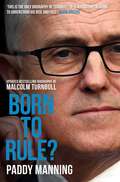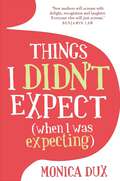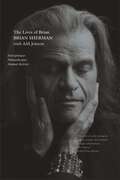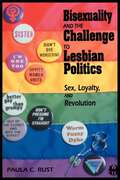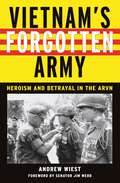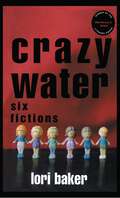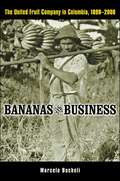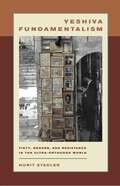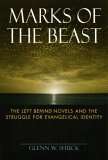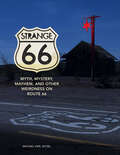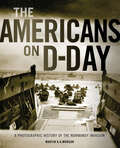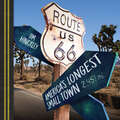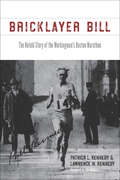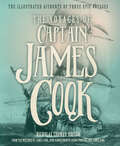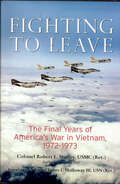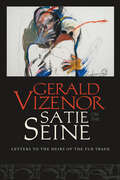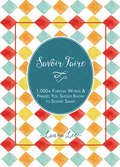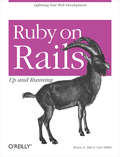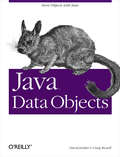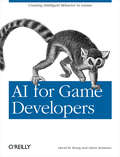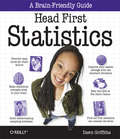- Table View
- List View
Born to Rule?
by Paddy ManningAfter wresting the prime ministership from long-term adversary Tony Abbott, Malcolm Turnbull's term at the Lodge was brutally short. It traversed a soaring electoral honeymoon to the marathon 2016 election, to the compromises of a government with the slimmest of majorities and finally death by political sword. Why? Was it collateral damage for a Liberal Party tearing itself apart, or a consequence of the man himself? Born to Rule?, by esteemed journalist Paddy Manning, is the updated bestselling biography of one of Australia's most celebrated overachievers, charting his very public highs and lows in technicolour detail. Based on countless interviews and painstaking research, Born to Rule? charts Turnbull's relentless progression from exclusive Point Piper to Oxford University; from beating the Thatcher government in the Spycatcher trial to losing the referendum on the republic; from defending the late Kerry Packer in a Royal Commission to defending his own role in Australia's biggest corporate collapse. It gives forensic accounts of him striking it rich as co-founder of OzEmail, his spectacular misstep with the Utegate affair, and the hotly contested battle for Wentworth on his grand march towards become prime minister. Turnbull may be out of parliament, but will he ever be out of politics?
Things I Didn't Expect (when I was expecting)
by Monica DuxPregnancy is natural, healthy and fun, right? Sure it is, if you're lucky. For others, it's an adventure in physical discomfort, unachievable ideals, kooky classes and meddling experts. When Monica Dux found herself pregnant with her first child, she was dismayed to find she belonged firmly in the second category. For her, pregnancy could only be described as a medium-level catastrophe. So, three years later and about to birth her second child, Monica went on a quest: to figure out what's really going on when we incubate. Monica explores the aspects of baby-making that we all want to talk about, but which are too embarrassing, unsettling or downright confronting. She also looks at the powerful forces that shape women's experiences of being pregnant in the west, the exploitative industries, and the medical and physical realities behind it all. Along the way, she fends off sadistic maternal health nurses, attempts to expand then contract her vagina, and struggles to keep her baby's placenta off her hippy brother's lunch menu.
Lives of Brian: Entrepreneur, Philanthropist, Animal Activist
by Brian Sherman1943: shopkeeper's son Brian Sherman is born into a tight-knit Jewish community in a small South African mining outpost. The Holocaust is raging in Europe and the Apartheid regime is at its height. In 1976, with only $5,000 to his name, he moves to Australia with his young family to start a new life. Nothing can prepare Brian for his meteoric rise or for the life-changing tests he will face. At his kitchen table he starts a fund management business with his friend Laurence Freedman. In 1986, they float a novel investment fund on the American Stock Exchange and raise over a billion Australian dollars. More billions follow, and opportunity flows. Brian goes on to direct the finances of the Sydney 2000 Olympics, and together with Laurence, acquires an interest in Network TEN, taking it from receivership to record profits. He chairs the Australian Museum Trust and brings in a heist of priceless specimens. He and gallerist wife Gene become leading philanthropists in the arts, medical science and Jewish affairs while Brian mentors his son, Emile, now an Oscar-winning film producer. Prompted by daughter Ondine, he has an epiphany on animal suffering, and, with her, devotes himself tirelessly to ending factory farming. Triumphant highs are interwoven with profound lows. His beloved twin grandsons are born with a rare and devastating genetic disorder. Brian and his son-in-law, Dror, go all out in search of a cure. Facing his own health challenges, and a lifelong accumulation of unexplored grief, Brian will be tested to the limits of his being.
Bisexuality and the Challenge to Lesbian Politics: Sex, Loyalty, and Revolution (The Cutting Edge: Lesbian Life and Literature Series)
by Paula C RustThe subject of bisexuality continues to divide the lesbian and gay community. At pride marches, in films such as Go Fish, at academic conferences, the role and status of bisexuals is hotly contested. Within lesbian communities, formed to support lesbians in a patriarchal and heterosexist society, bisexual women are often perceived as a threat or as a political weakness. Bisexual women feel that they are regarded with suspicion and distrust, if not openly scorned. Drawing on her research with over 400 bisexual and lesbian women, surveying the treatment of bisexuality in the lesbian and gay press, and examining the recent growth of a self-consciously political bisexual movement, Paula Rust addresses a range of questions pertaining to the political and social relationships between lesbians and bisexual women. By tracing the roots of the controversy over bisexuality among lesbians back to the early lesbian feminist debates of the 1970s, Rust argues that those debates created the circumstances in which bisexuality became an inevitable challenge to lesbian politics. She also traces it forward, predicting the future of sexual politics.
Disoriented: Asian Americans, Law, and the Nation-State (Critical America #11)
by Robert ChangDoes "Asian American" denote an ethnic or racial identification? Is a person of mixed ancestry, the child of Euro- and Asian American parents, Asian American? What does it mean to refer to first generation Hmong refugees and fifth generation Chinese Americans both as Asian American? In Disoriented: Asian Americans, Law, and the Nation State, Robert Chang examines the current discourse on race and law and the implications of postmodern theory and affirmative action-all of which have largely excluded Asian Americans-in order to develop a theory of critical Asian American legal studies. Demonstrating that the ongoing debate surrounding multiculturalism and immigration in the U.S. is really a struggle over the meaning of "America," Chang reveals how the construction of Asian American-ness has become a necessary component in stabilizing a national American identity-- a fact Chang criticizes as harmful to Asian Americans. Defining the many "borders" that operate in positive and negative ways to construct America as we know it, Chang analyzes the position of Asian Americans within America's black/white racial paradigm, how "the family" operates as a stand-in for race and nation, and how the figure of the immigrant embodies a central contradiction in allegories of America. "Has profound political implications for race relations in the new century"-Michigan Law Review, May 2001
Classical Arabic Literature: A Library of Arabic Literature Anthology (Library of Arabic Literature #5)
by Geert Jan GelderA major translation achievement, this anthology presents a rich assortment of classical Arabic poems and literary prose, from pre-Islamic times until the eighteenth century, with short introductions to guide non-specialist students and informative endnotes and bibliography for advanced scholars. Both entertaining and informative, Classical Arabic Literature ranges from the early Bedouin poems with their evocation of desert life to refined urban lyrical verse, from tender love poetry to sonorous eulogy and vicious lampoon, and from the heights of mystical rapture to the frivolity of comic verse. Prose selections include anecdotes, entertaining or edifying tales and parables, a fairy-tale, a bawdy story, samples of literary criticism, and much more.With this anthology, distinguished Arabist Geert Jan van Gelder brings together well-known texts as well as less familiar pieces new even to scholars. Classical Arabic Literature reveals the rich variety of pre-modern Arabic social and cultural life, where secular texts flourished alongside religious ones. This masterful anthology introduces this vibrant literary heritage—including pieces translated into English for the first time—to a wide spectrum of new readers. An English-only edition.
Vietnam's Forgotten Army: Heroism and Betrayal in the ARVN
by Andrew Wiest2009 Society for Military History Distinguished Book Award for BiographyExamines South Vietnam’s complex relationship with the United States through the stories of two Vietnamese soldiers' diverging pathsVietnam’s Forgotten Army: Heroism and Betrayal in the ARVN chronicles the lives of Pham Van Dinh and Tran Ngoc Hue, two of the brightest young stars in the Army of the Republic of Vietnam (ARVN). Both men fought with valor in a war that seemed to have no end, exemplifying ARVN bravery and determination that is largely forgotten or ignored in the West. However, while Hue fought until he was captured by the North Vietnamese Army and then endured thirteen years of captivity, Dinh surrendered and defected to the enemy, for whom he served as a teacher in the reeducation of his former ARVN comrades. An understanding of how two lives that were so similar diverged so dramatically provides a lens through which to understand the ARVN and South Vietnam’s complex relationship with America's government and military. The lives of Dinh and Hue reflect the ARVNs battlefield successes, from the recapture of the Citadel in Hue City in the Tet Offensive of 1968, to Dinhs unheralded role in the seizure of Hamburger Hill a year later. However, their careers expose an ARVN that was over-politicized, tactically flawed, and dependent on American logistical and firepower support. Marginalized within an American war, ARVN faced a grim fate as U.S. forces began to exit the conflict. As the structure of the ARVN/U.S. alliance unraveled, Dinh and Hue were left alone to make the most difficult decisions of their lives. Andrew Wiest weaves historical analysis with a compelling narrative, culled from extensive interviews with Dinh, Hue, and other key figures. Once both military superstars, Dinh is viewed by a traitor by many within the South Vietnamese community, while Hue, an expatriate living in northern Virginia, is seen as a hero who never let go of his ideals. Their experiences and legacies mirror that of the ARVNs rise and fall as well as the tragic history of South Vietnam.
Crazy Water: Six Fictions
by Lori BakerIn Crazy Water: Six Fictions, Lori Baker pushes the boundaries between truth and reality with curious, tragi-comic results. The imagination is Baker's terrain, and in these stories, pleasant suburban childhoods, family drives, seaside vacations, and an academic's quest for tenure all are strangely warped, yet nonetheless still mirror a world we thought we knew. In these brief pages, boys become dogs, students hide in the molluscan places, and mothers do their best to rescind their unsatisfying children. "I say things smugly as if I understand them, muses one of Baker's narrators. Indeed, characters and readers alike are undermined in these deft and quirky fictions. Exposing and imploding all of our expectations, Baker shows us how menacing (and funny) the apparently ordinary can be.
Bananas and Business: The United Fruit Company in Colombia, 1899-2000
by Marcelo BucheliFor well over a century, the United Fruit Company (UFCO) has been the most vilified multinational corporation operating in Latin America. Criticism of the UFCO has been widespread, ranging from politicians to consumer activists, and from labor leaders to historians, all portraying it as an overwhelmingly powerful corporation that shaped and often exploited its host countries. In this first history of the UFCO in Colombia, Marcelo Bucheli argues that the UFCO's image as an all-powerful force in determining national politics needs to be reconsidered. Using a previously unexplored source—the internal archives of Colombia's UFCO operation—Bucheli reveals that before 1930, the UFCO worked alongside a business-friendly government that granted it generous concessions and repressed labor unionism. After 1930, however, the country experienced dramatic transformations including growing nationalism, a stronger labor movement, and increasing demands by local elites for higher stakes in the banana export business.In response to these circumstances, the company abandoned production, selling its plantations (and labor conflicts) to local growers, while transforming itself into a marketing company. The shift was endorsed by the company's shareholders and financial analysts, who preferred lower profits with lower risks, and came at a time in which the demand for bananas was decreasing in America. Importantly, Bucheli shows that the effect of foreign direct investment was not unidirectional. Instead, the agency of local actors affected corporate strategy, just as the UFCO also transformed local politics and society.
Yeshiva Fundamentalism: Piety, Gender, and Resistance in the Ultra-Orthodox World
by Nurit Stadler2009 Choice Outstanding Academic TitleThe ultra-Orthodox yeshiva, or Jewish seminary, is a space reserved for men, and for a focus on religious ideals. Fundamentalist forms of piety are usually believed to be quite resistant to change. In Yeshiva Fundamentalism, Nurit Stadler uncovers surprising evidence that firmly religious and pious young men of this community are seeking to change their institutions to incorporate several key dimensions of the secular world: a redefinition of masculinity along with a transformation of the family, and participation in civic society through the labor market, the army, and the construction of organizations that aid terror victims. In their private thoughts and sometimes public actions, they are resisting the demands placed on them to reject all aspects of the secular world.Because women are not allowed in the yeshiva setting, Stadler’s research methods had to be creative. She invented a way to simulate yeshiva learning with young yeshiva men by first studying with an informant to learn key religious texts, often having to do with family life, sexuality, or participation in the larger society. This informant then invited students over to discuss these texts with Stadler and himself outside of the yeshiva setting. This strategy enabled Stadler to gain access to aspects of yeshiva life in which a woman is usually unable to participate, and to hear “unofficial” thoughts and reactions which would have been suppressed had the interviews taken place within the yeshiva.Yeshiva Fundamentalism provides an intriguing — and at times surprising — glimpse inside the all-male world of the ultra-orthodox yeshivas in Israel, while providing insights relevant to the larger context of transformations of fundamentalism worldwide. While there has been much research into how contemporary feminism has influenced the study of fundamentalist groups worldwide, little work has focused on ultra-Orthodox men’s desires to change, as Stadler does here, showing how fundamentalist men are themselves involved in the formulation of new meanings of piety, gender, modernity and relations with the Israeli state.
Marks of the Beast: The Left Behind Novels and the Struggle for Evangelical Identity
by Glenn W. ShuckThe Left Behind series by Tim LaHaye and Jerry B. Jenkins has become a popular culture phenomenon, selling an astonishing 40 million copies to date. These novels, written by two well-known evangelical Christians, depict the experiences of those "left behind" in the aftermath of the Rapture, when Christ removes true believers, leaving everyone else to suffer seven years of Tribulation under Satan's proxy, Antichrist.In Marks of the Beast, Shuck uncovers the reasons behind the books' unprecedented appeal, assessing why the novels have achieved a status within the evangelical community even greater than Hal Lindsey's 1970 blockbuster The Late Great Planet Earth. It also explores what we can learn from them about evangelical Christianity in America. Shuck finds that, ironically, the series not only reflects contemporary trends within conservative evangelicalism but also encourages readers—especially evangelicals—to embrace solutions that enact, rather than engage, their fears. Most strikingly, he shows how the ultimate vision put forth by the series' authors inadvertently undermines itself as the series unfolds.
Strange 66: Myth, Mystery, Mayhem, and Other Weirdness on Route 66
by Michael Karl WitzelWhen you open Strange 66, take a look beyond the all-American sheen to the seedy, creepy, and just plain weird stories behind America's Mother Road. Route 66 conjures images of an innocent golden age of car travel: shiny V8s powering down hot, two-lane blacktop, sucking 20-cent-a-gallon gasoline, and periodically depositing their occupants at mom-n-pop greasy spoons, neon-lit motels, and tourist traps. But America&’s Mother Road wasn&’t all about ruddy-cheeked, summer vacationers. Route 66 and the regions it traverses have a side more seldom seen, rich with weird tales (mimetic architecture, paranormal phenomena, and even cryptozoology) to the downright sordid and seedy (murder, mistreatment, and other assorted mayhem). In Strange 66, bestselling Route 66 authority Michael Witzel explores the flip side of Route 66 to offer details on infamous Route 66 locations that once served as hideouts for the James Gang (Meramec Caverns), Bonnie and Clyde (Baxter Springs, Kansas), and Al Capone (Cicero, Illinois). There are the stories of unspeakable crimes committed along 66, such as the Stafflebeck &“murder bordello&” in Galena, Kansas, and Arizona&’s &“Orphan Maker of Route 66.&” Witzel also explores the people that passed through the region, including the Dust Bowl exodus and the Trail of Tears tribute in Jerome, Missouri. Then there are the lighter, though still strange stories, such as the Route 66 Great Transcontinental Footrace and the origins of various roadside colossi, like the Blue Whale of Catoosa and Giganticus Headicus in Walapai, Arizona. And speaking of heads, what about steak? Eat one as big as your head at the Big Texan in Amarillo—and it&’s free! All of these stories culminate in a look at Route 66 unlike any other, completely illustrated with modern and archival photography and written by an acknowledged authority on the Mother Road.
Asked What Has Changed (Wesleyan Poetry Series)
by Ed RobersonA Black ecopoet observes the changing world from a high-rise window, &“ever alert to affinities between the small and the vast, the fleeting and the cosmic&” (James Gibbons, Hyperallergic). Award-winning poet Ed Roberson confronts the realities of an era in which the fate of humanity and the very survival of our planet are uncertain. Departing from the traditional nature poem, Roberson's work reclaims a much older tradition, drawing into poetry&’s orbit what the physical and human sciences reveal about the state of a changing world. These poems test how far the lyric can go as an answer to our crisis, even calling into question poetic form itself. Reflections on the natural world and moments of personal interiority are interwoven with images of urbanscapes, environmental crises, and political instabilities. These poems speak life and truth to modernity in all its complexity. Throughout, Roberson takes up the ancient spiritual concern—the ephemerality of life—and gives us a new language to process the feeling of living in a century on the brink.
The Americans on D-Day: A Photographic History of the Normandy Invasion
by Martin K. MorganExperience the Normandy invasion through some of D-Day’s most incredible photographs: “A rare contribution to our understanding of that historic event.” —Barrett Tillman, author of Brassey’s D-Day EncyclopediaAlthough it took a multinational coalition to conduct World War II’s amphibious D-Day landings, the US military made a major contribution to the operation that created mighty American legends and unforgettable heroes. In The Americans on D-Day: A Photographic History of the Normandy Invasion, WWII historian Martin K. A. Morgan presents 450 of the most compelling and dramatic photographs captured in northern France during the first day and week of its liberation.With eight chapters of place-setting author introductions, riveting period imagery, and highly detailed explanatory captions, Morgan offers anyone interested in D-Day a fresh look at a campaign that was fought many decades ago and yet remains the object of unwavering interest to this day. While some of these images are familiar, they have been treated anonymously for far too long and haven’t been placed within the proper context of time or place. Many others have never been published before. Together, these photographs reveal minute details about weapons, uniforms, and equipment, while simultaneously narrating an intimate human story of triumph, tragedy, and sacrifice. From Omaha Beach to Utah, from Sainte-Mère-Église to Pointe du Hoc, The Americans on D-Day is a striking visual record of the epic air, sea, and land battle that was the Normandy invasion.
Route 66: America's Longest Small Town
by Jim HinckleyTake a road trip down the iconic &“Mother Road&”! Route 66 tells the stories of this highway's people, legends, and funky roadside attractions. Part legend, part nostalgia, part working highway, part touchstone to an America of the past, Route 66 is the only road in the United States so fascinating that both Americans and international visitors read about and may never actually travel. Route 66: America's Longest Small Town takes you on a virtual road trip, telling you about the highway's legends, stories, people, and businesses that are the essence of the Route 66 experience.You will be introduced to the road's past, present, and future, including a nostalgic look at vintage diners, signs, advertisements, and roadside attractions. Featuring all-new photography along the existing and former 2,000-mile route of the highway, this book, from America's foremost Route 66 author, combines the nostalgia of a storied past with the intriguing realities of an evolving present to create an intriguing portrait of the Mother Road of America.
Bricklayer Bill: The Untold Story of the Workingman's Boston Marathon
by Patrick L. Kennedy Lawrence W. KennedyTwo weeks after the United States officially entered World War I, Irish American "Bricklayer Bill" Kennedy won the Boston Marathon wearing his stars-and-stripes bandana, rallying the crowd of patriotic spectators. Kennedy became an American hero and, with outrageous stories of his riding the rails and sleeping on pool tables, a racing legend whose name has since appeared in almost every book written on the Boston Marathon. When journalist Patrick Kennedy and historian Lawrence Kennedy unearthed their uncle's unpublished memoir, they discovered a colorful character who lived a tumultuous life, beyond his multiple marathons. The bricklayer survived typhoid fever, a five-story fall, auto and train accidents, World War action, Depression-era bankruptcy, decades of back-breaking work, and his own tendency to tipple. In many ways, Bill typified the colorful, newly emerging culture and working-class ethic of competitive long-distance running before it became a professionalized sport. Bricklayer Bill takes us back to another time, when bricklayers, plumbers, and printers could take the stage as star athletes.
The Voyages of Captain James Cook: The Illustrated Accounts of Three Epic Voyages
by James King John Hawkesworth James Cook Georg ForsterThe first-ever illustrated account of the explorer and cartographer’s epic eighteenth-century Pacific voyages, complete with excerpts from his journals.This is history’s greatest adventure story. In 1766, the Royal Society chose prodigal mapmaker and navigator James Cook to lead a South Pacific voyage. His orders were to chart the path of Venus across the sun. That task completed, his ship, the HMS Endeavour, continued to comb the southern hemisphere for the imagined continent Terra Australis. The voyage lasted from 1768 to 1771, and upon Cook’s return to London, his journaled accounts of the expedition made him a celebrity. After that came two more voyages for Cook and his crew—followed by Cook’s murder by natives in Hawaii. The Voyages of Captain James Cook reveals Cook’s fascinating story through journal excerpts, illustrations, photography, and supplementary writings.During Cook’s career, he logged more than 200,000 miles—nearly the distance to the moon. And along the way, scientists and artists traveling with him documented exotic flora and fauna, untouched landscapes, indigenous peoples, and much more. In addition to the South Pacific, Cook’s voyages took him to South America, Antarctica, New Zealand, the Pacific Coast from California to Alaska, the Arctic Circle, Siberia, the East Indies, and the Indian Ocean. When he set out in 1768, more than one-third of the globe was unmapped. By the time Cook died in 1779, he had created charts so accurate that some were used into the 1990s.The Voyages of Captain James Cook is a handsome illustrated edition of Cook’s selected writings spanning his Pacific voyages, ending in 1779 with the delivery of his salted scalp and hands to his surviving crewmembers. It’s an enthralling read for anyone who appreciates history, science, art, and classic adventure.
The Mindful Art of Wild Swimming: Reflections for Zen Seekers (Mindfulness Ser.)
by Tessa Wardley“Turn your outdoor bathing into an enriching meditation with this exploration into the emotional benefits of swimming in nature.” —Health & FitnessThe Mindful Art of Wild Swimming explores how swimming in rivers, lakes, and seas is the very epitome of conscious living. Zen-seeker Tessa Wardley reconnects the physical and spiritual cycles of life to the changing seasons and flow of wild waters worldwide and leads the reader on to a mindful journey through the natural world. Combining expert insight and personal anecdote, she shares with sparkling clarity why our relationship with open water is so fundamental to pure wellbeing, and reveals how wild swimming can be the ultimate Zen meditation.“Tessa Wardley is a keen and knowledgeable guide” —Times Literary Supplement
Fighting to Leave: The Final Years of America's War in Vietnam, 1972–1973
by Colonel Robert E. StoffeyFrom a Vietnam wartime veteran and US Marine officer, an insider’s account of the final military strategies of the Vietnam war.Perhaps more vexing than any part of the Vietnam War—Americas longest—was getting out. This book offers a chronicle of those last difficult years, 1972 and 1973, that is at once a detailed and thorough overview and at the same time a vividly personal account. The year 1972 found Marine Corps pilot Robert E. Stoffey beginning his third combat tour in Vietnam.After flying 440 combat missions out of Da Nang and Marble Mountain Airfields in South Vietnam—and being shot down twice—between 1965 and 1970, Stoffey was in a unique position to judge the United States changed strategy. From the vantage point of the USS Oklahoma City, he fought—and observed—the critical and complex last two years of the war as Marine Air Officer and Assistant Amphibious Warfare Officer on the staff of the Commander, Seventh Fleet. As the South Vietnamese battled for survival against the onslaught from the Communist North Vietnamese Army, the US Seventh Fleet, afloat in the Gulf of Tonkin and the South China Sea, was a significant supporting force.With the US Navy’s mining of North Vietnams waterways, concentrated shore bombardments, and air attacks, this sea power was instrumental in leading to the negotiated end of the war and return of our POWs. This is the story that Robert Stoffey tells in his firsthand account of how the Vietnam War finally ended and what it took to get our POWs home.
Satie on the Seine: Letters to the Heirs of the Fur Trade
by Gerald VizenorIn this historical epistolary novel from an award-winning author, Native American brothers survive the Nazi occupation of Paris. In this powerful epistolary novel, acclaimed Anishinaabe author Gerald Vizenor interweaves history, cultural stories, and irony to reveal a shadow play of truth and politics. Basile Hudon Beaulieu lives in a houseboat on the River Seine in Paris between 1932 and 1945. He observes the liberals, fascists, artists, and bohemians, and presents puppet shows. His thoughts and experiences are documented in the form of fifty letters to the heirs of the fur trade. Basile comments on the mercy of liberté, the torment and solidarity of Le Front Populaire and the alliance of political leftists, and considers at the same time the massacres of Native Americans, and the misery of federal policies on reservations in relation to the savage strategies of royalists, fascists, communists, and anti-Semites. The hand puppets created by Basile and his brother Aloysius make brilliant commentaries of their own, and the letters include accounts of parleys between the puppet versions of Gertrude Stein and Adolf Hitler, Apollinaire and Anaïs Nin, Sitting Bull and Victor Hugo, Carlos Montezuma and Émile Zola, Chief Joseph and Voltaire, and others. Vizenor is a unique voice of Native American presence in the world of literature, and in his inimitable creative style he delivers a moving, challenging, and darkly humorous commentary on war and modernity.
Savoir Faire: 1,000+ Foreign Words & Phrases You Should Know to Sound Smart
by Laura LeeAn A-to-Z collection of foreign phrases to add to your lexicon—and information about the quirky, fascinating origins of the English language.Some foreign phrases are so good they become a sort of lingua franca. They capture the true zeitgeist, where the English translation is just comme ci, comme ca. If you’re a linguistics geek or language lover with a curiosity about the origins of foreign words and phrases, you need this beautifully designed reference that includes approximately 1,000 foreign phrases in languages that run the gamut from French to German to Japanese, Arabic, Sanskrit, and more. Entries offer precise translations, surprising origins, and commonly used terms you didn’t even know were foreign. (You may even find a phrase or two that you’ve been using incorrectly!) Also included are phonetic pronunciations and sidebars that explore the quirks of some favorite expressions.Don’t suffer one more trip to the museum asking yourself, “What the heck is trompe l’oeil?” Don’t put down yet another Umberto Eco novel out of sheer confusion. And avoid tumbling into the camp of declasse—instead, become one of the intelligentsia! This handy guide will make you a true cognoscente of culture.Praise for Laura Lee“Lee’s dry, humorous tone makes her a charming companion . . . She has a penchant for wordplay that is irresistible.” —San Francisco Chronicle
Ruby on Rails: Up and Running
by Curt Hibbs Bruce TateRuby on Rails is the super-productive new way to develop full-featuredweb applications. With Ruby on Rails, powerful web applications thatonce took weeks or months to develop can now be produced in a matter ofdays. If it sounds too good to be true, it isn't.If you're like a lot of web developers, you've probably consideredkicking the tires on Rails - the framework of choice for the newgeneration of Web 2.0 developers. Ruby on Rails: Up and Running takes you out for a test drive and shows you just how fastRuby on Rails can go.This compact guide teaches you the basics of installing and using boththe Ruby scripting language and the Rails framework for the quickdevelopment of web applications. Ruby on Rails: Up andRunning covers just about everything youneed - from making a simple database-backed application toadding elaborate Ajaxian features and all the juicy bits in between.While Rails is praised for its simplicity and speed of development,there are still a few steps to master on the way. More advancedmaterial helps you map data to an imperfect table, traverse complexrelationships, and build custom finders. A section on working with Ajaxand REST shows you how to exploit the Rails service frameworks to sendemails, implement web services, and create dynamic user-centric webpages. The book also explains the essentials of logging to findperformance problems and delves into other performance-optimizingtechniques.As new web development frameworks go, Ruby on Rails is the talk of thetown. And Ruby on Rails: Up and Running can makesure you're in on the discussion.
Java Data Objects: Store Objects with Ease
by David Jordan Craig RussellJava Data Objects revolutionizes the way Java developers interact with databases and other datastores. JDO allows you to store and retrieve objects in a way that's natural to Java programmers. Instead of working with JDBC or EJB's container-managed persistence, you work directly with your Java objects. You don't have to copy data to and from database tables or issue SELECTs to perform queries: your JDO implementation takes care of persistence behind-the-scenes, and you make queries based on the fields of your Java objects, using normal Java syntax.The result is software that is truly object-oriented: not code that is partially object-oriented, with a large database-shaped lump on the back end. JDO lets you save plain, ordinary Java objects, and does not force you to use different data models and types for dealing with storage. As a result, your code becomes easier to maintain, easier to re-use, and easier to test. And you're not tied to a specific database vendor: your JDO code is entirely database-independent. You don't even need to know whether the datastore is a relational database, an object database, or just a set of files.This book, written by the JDO Specification Lead and one of the key contributors to the JDO Specification, is the definitive work on the JDO API. It gives you a thorough introduction to JDO, starting with a simple application that demonstrates many of JDO's capabilities. It shows you how to make classes persistent, how JDO maps persistent classes to the database, how to configure JDO at runtime, how to perform transactions, and how to make queries. More advanced chapters cover optional features such as nontransactional access and optimistic transactions. The book concludes by discussing the use of JDO in web applications and J2EE environments.Whether you only want to read up on an interesting new technology, or are seriously considering an alternative to JDBC or EJB CMP, you'll find that this book is essential. It provides by far the most authoritative and complete coverage available.
AI for Game Developers: Creating Intelligent Behavior in Games
by Glenn Seemann David M BourgAdvances in 3D visualization and physics-based simulation technology make it possible for game developers to create compelling, visually immersive gaming environments that were only dreamed of years ago. But today's game players have grown in sophistication along with the games they play. It's no longer enough to wow your players with dazzling graphics; the next step in creating even more immersive games is improved artificial intelligence, or AI.Fortunately, advanced AI game techniques are within the grasp of every game developer--not just those who dedicate their careers to AI. If you're new to game programming or if you're an experienced game programmer who needs to get up to speed quickly on AI techniques, you'll find AI for Game Developers to be the perfect starting point for understanding and applying AI techniques to your games.Written for the novice AI programmer, AI for Game Developers introduces you to techniques such as finite state machines, fuzzy logic, neural networks, and many others, in straightforward, easy-to-understand language, supported with code samples throughout the entire book (written in C/C++). From basic techniques such as chasing and evading, pattern movement, and flocking to genetic algorithms, the book presents a mix of deterministic (traditional) and non-deterministic (newer) AI techniques aimed squarely at beginners AI developers. Other topics covered in the book include:Potential function based movements: a technique that handles chasing, evading swarming, and collision avoidance simultaneouslyBasic pathfinding and waypoints, including an entire chapter devoted to the A* pathfinding algorithmAI scriptingRule-based AI: learn about variants other than fuzzy logic and finite state machinesBasic probabilityBayesian techniquesUnlike other books on the subject, AI for Game Developers doesn't attempt to cover every aspect of game AI, but to provide you with usable, advanced techniques you can apply to your games right now. If you've wanted to use AI to extend the play-life of your games, make them more challenging, and most importantly, make them more fun, then this book is for you.
Head First Statistics: A Brain-Friendly Guide (Head First)
by Dawn GriffithsWouldn't it be great if there were a statistics book that made histograms, probability distributions, and chi square analysis more enjoyable than going to the dentist? Head First Statistics brings this typically dry subject to life, teaching you everything you want and need to know about statistics through engaging, interactive, and thought-provoking material, full of puzzles, stories, quizzes, visual aids, and real-world examples.Whether you're a student, a professional, or just curious about statistical analysis, Head First's brain-friendly formula helps you get a firm grasp of statistics so you can understand key points and actually use them. Learn to present data visually with charts and plots; discover the difference between taking the average with mean, median, and mode, and why it's important; learn how to calculate probability and expectation; and much more.Head First Statistics is ideal for high school and college students taking statistics and satisfies the requirements for passing the College Board's Advanced Placement (AP) Statistics Exam. With this book, you'll:Study the full range of topics covered in first-year statisticsTackle tough statistical concepts using Head First's dynamic, visually rich format proven to stimulate learning and help you retain knowledge Explore real-world scenarios, ranging from casino gambling to prescription drug testing, to bring statistical principles to lifeDiscover how to measure spread, calculate odds through probability, and understand the normal, binomial, geometric, and Poisson distributionsConduct sampling, use correlation and regression, do hypothesis testing, perform chi square analysis, and moreBefore you know it, you'll not only have mastered statistics, you'll also see how they work in the real world. Head First Statistics will help you pass your statistics course, and give you a firm understanding of the subject so you can apply the knowledge throughout your life.
